News
-
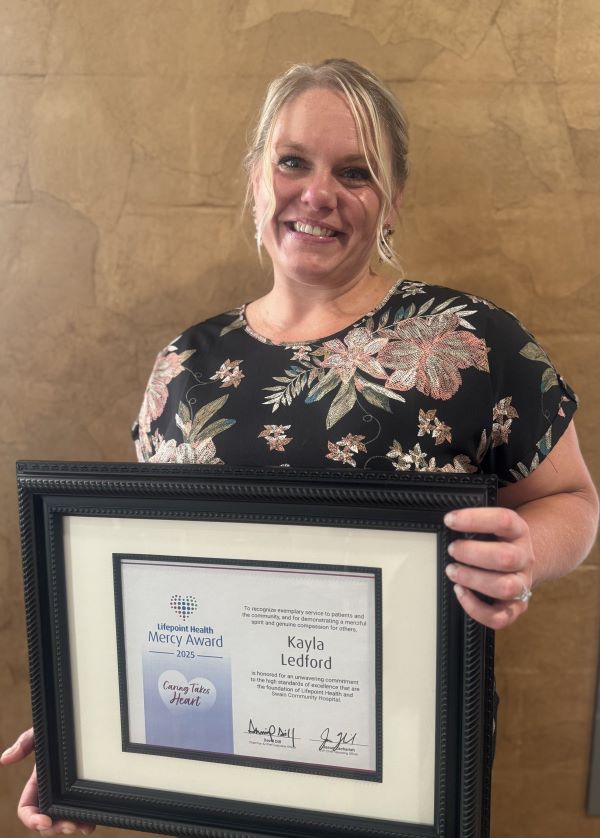
Swain Community Hospital honors Kayla Ledford, PharmD with 2025 Mercy Award
May 20, 2025Swain Community Hospital is pleased to announce that Kayla Ledford, PharmD, has been selected as the recipient of the hospital's 2025 Mercy Award. The Mercy Award recognizes one employee from each of Lifepoint Health's facilities who profoundly impacts the lives of others and exemplifies the values on which the company...
Learn more -
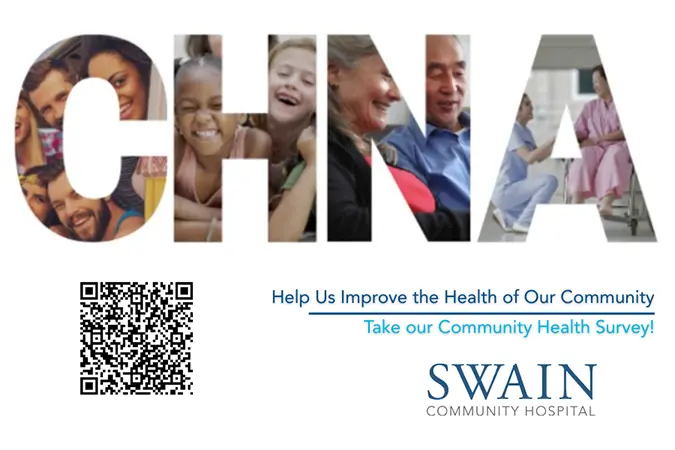
Harris Regional Hospital and Swain Community Hospital launch comprehensive surveys to evaluate the health needs of Jackson and Swain counties
April 17, 2025Harris Regional Hospital and Swain Community Hospital, in partnership with local health professionals and community stakeholders, have launched comprehensive Community Health Needs Assessments (CHNAs) to better understand and address the most pressing health issues in Jackson and Swain counties.
Learn more -
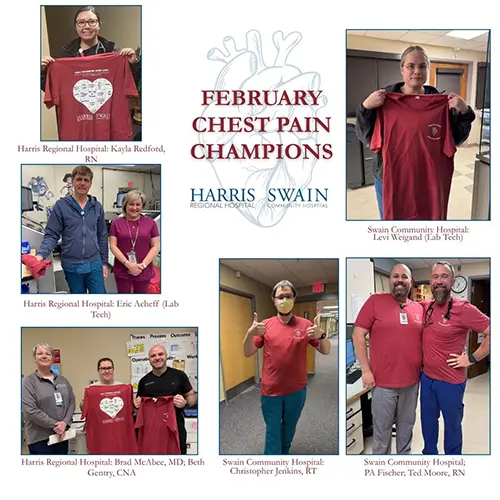
Harris Regional and Swain Community Hospitals Launch New Initiative to Recognize Cardiac and Stroke Champions
April 15, 2025Harris Regional Hospital and Swain Community Hospital are proud to introduce a new initiative recognizing exceptional staff through the Cardiac and Stroke Champion Program.
Learn more -
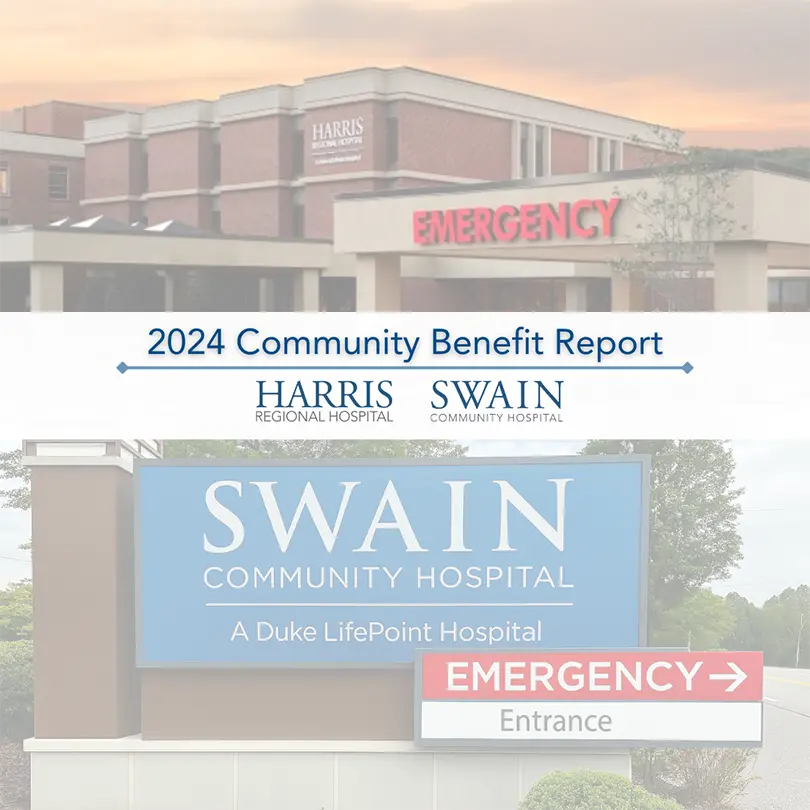
Harris Regional Hospital and Swain Community Hospital publish 2024 Community Benefit Report
April 10, 2025Harris Regional Hospital and Swain Community Hospital today published a community benefit report for the 2024 calendar year. This annual report highlights the many ways the hospitals are supporting the health and economic vitality of western North Carolina as part of their mission of making communities healthier®.
Learn more -
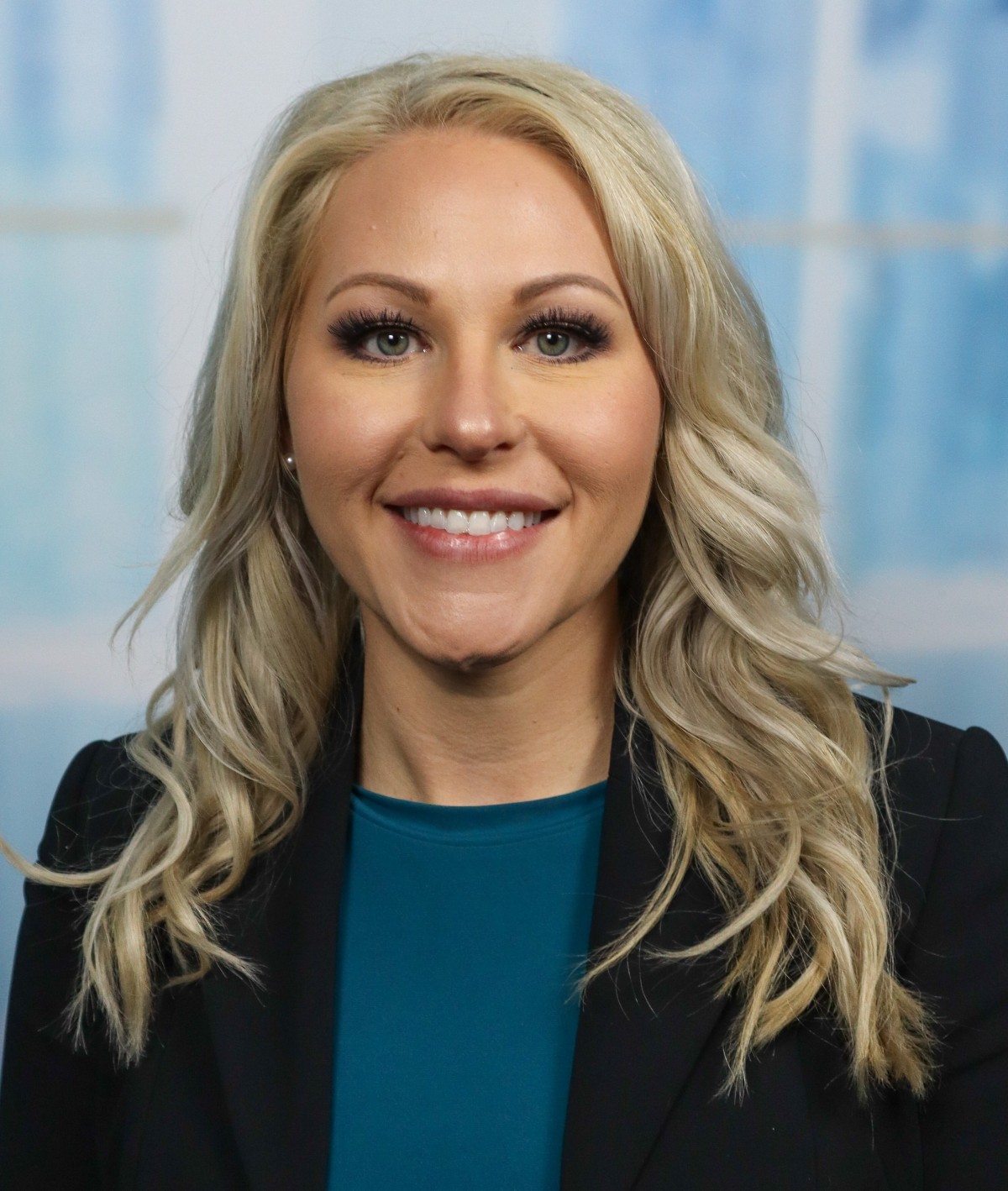
Rebekah Artman, MBA, BSN, RN, CCRN, CPPS appointed as Senior Nursing Officer for Harris Regional Hospital and Swain Community Hospital
March 03, 2025Harris Regional Hospital and Swain Community Hospital, Duke LifePoint hospitals, are pleased to announce that Rebekah Artman, MBA, BSN, RN, CCRN, CPPS has been appointed to the role of senior nursing officer, overseeing nursing operations at both facilities.
Learn more -
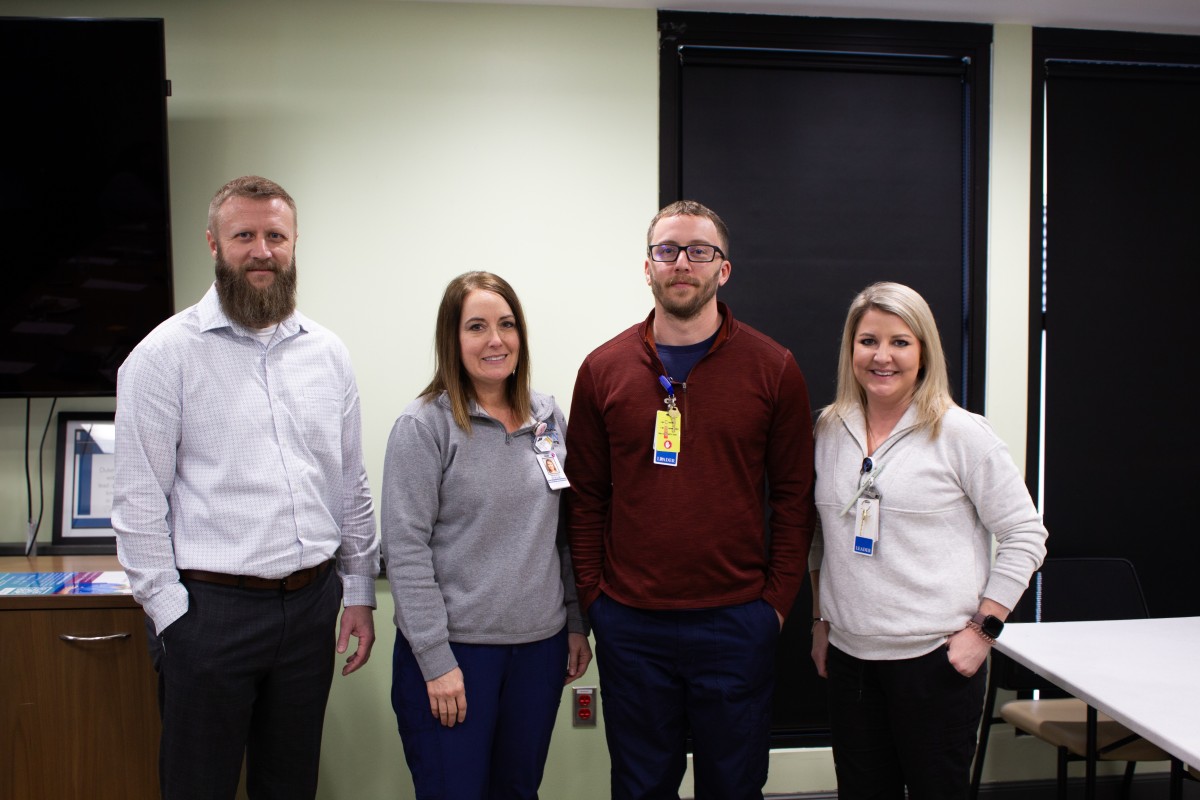
Harris Regional Hospital and Swain Community Hospital celebrate new service award recipients, recognizing tenure and commitment of staff and providers
February 26, 2025Harris Regional Hospital and Swain Community Hospital were proud to celebrate the dedication and commitment of their staff during a special luncheon held last week. The event honored employees who have reached significant milestones in their tenure with the hospitals.
Learn more -

Stephen Plemmons named market vice president of operations for Harris Regional Hospital, Haywood Regional Medical Center, and Swain Community Hospital
February 21, 2025Stephen Plemmons, MSN, RN has been appointed as the new market vice president of operations for Harris Regional Hospital, Haywood Regional Medical Center (HRMC), and Swain Community Hospital – Duke LifePoint hospitals serving the mountain communities west of Asheville.
Learn more -
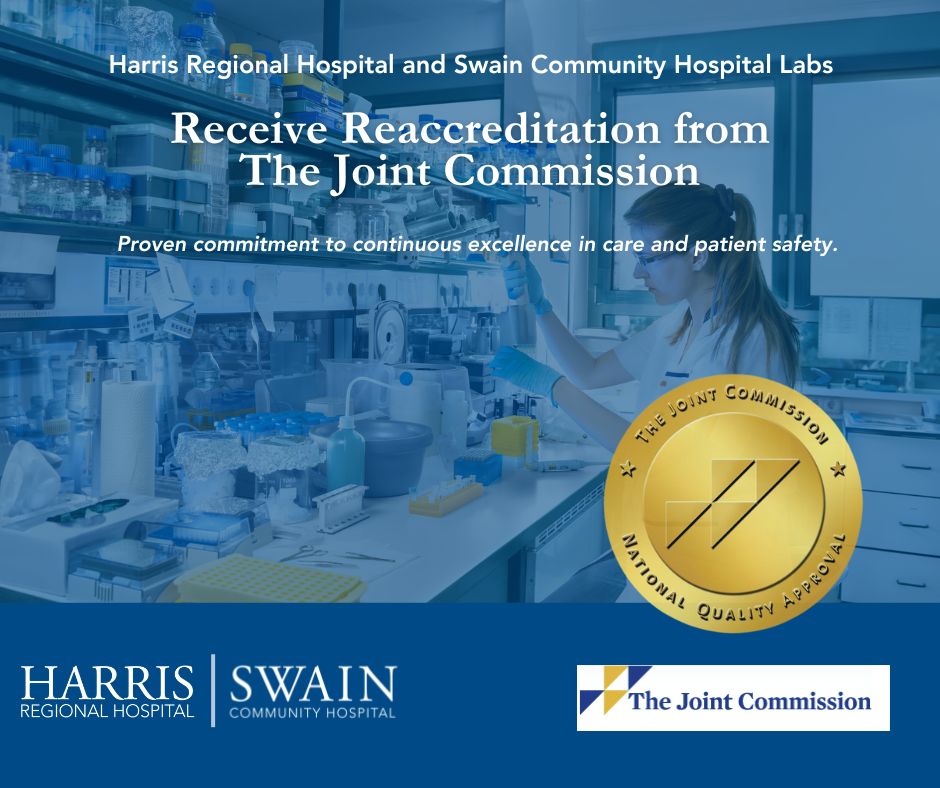
Harris Regional Hospital receives re-accreditation from The Joint Commission for excelling in lab and point of care testing
December 13, 2024As part of its mission of making communities healthier Harris Regional Hospital is honored to have been reaccredited by The Joint Commission for all its lab locations, including inpatient labs and outpatient labs inside both Harris Regional and Swain Community Hospitals, and outpatient labs at Harris Medical Park of Sylva and Harris Medical Park of Franklin.
Learn more -
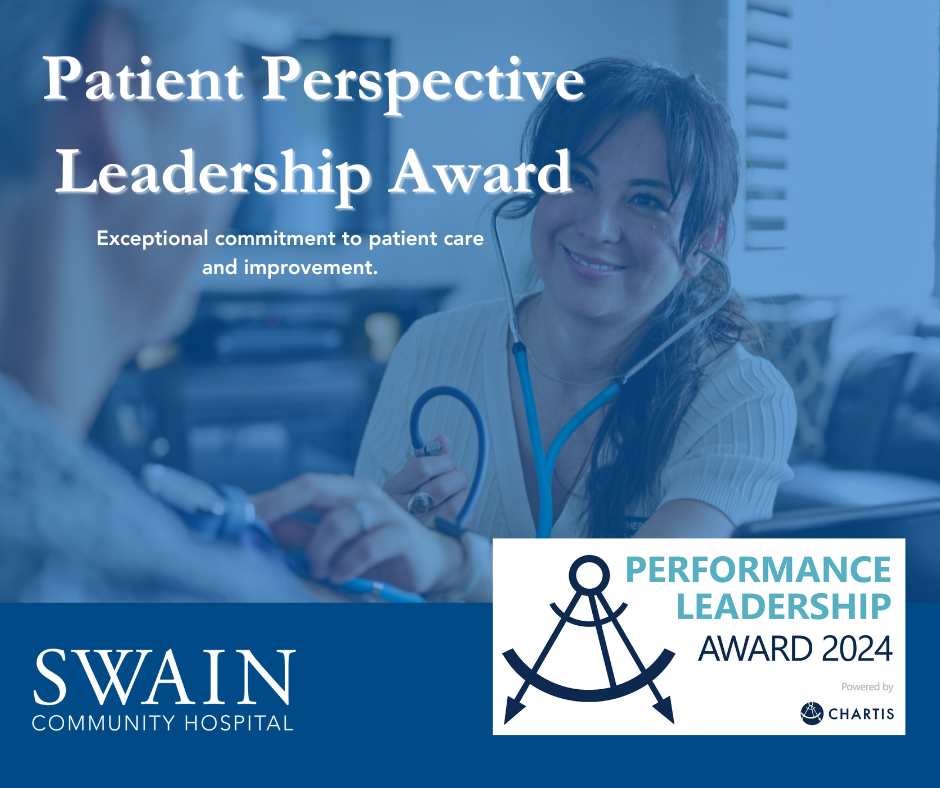
Swain Community Hospital earns 2024 Performance Leadership Award from The Chartis Center for Rural Health
December 10, 2024Swain Community Hospital is proud to announce it has earned a 2024 Performance Leadership Award for excellence in Patient Perspective. Compiled by The Chartis Center for Rural Health, the Performance Leadership Awards recognize top quartile performance (i.e., 75th percentile or above) among rural hospitals in Quality, Outcomes and/or Patient Perspective.
Learn more -
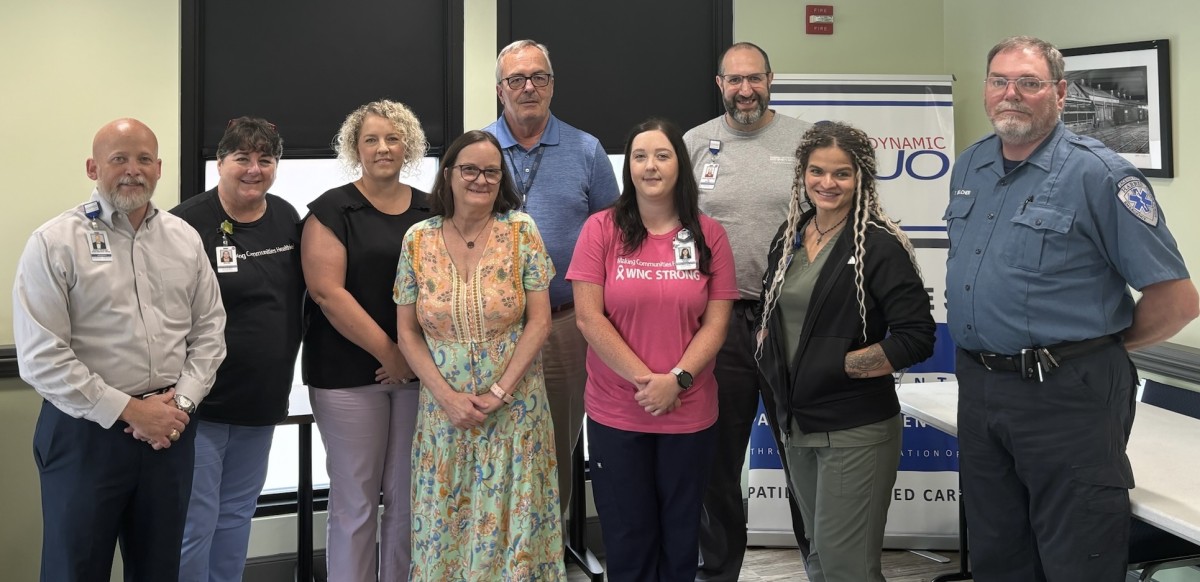
Swain Community Hospital and Harris Regional Hospital honor staff with Service Awards
August 13, 2024Swain Community Hospital and Harris Regional Hospital were pleased to hold another celebratory luncheon last week in honor of staff members who recently reached significant milestones in their tenure as employees of the hospitals.
Learn more -
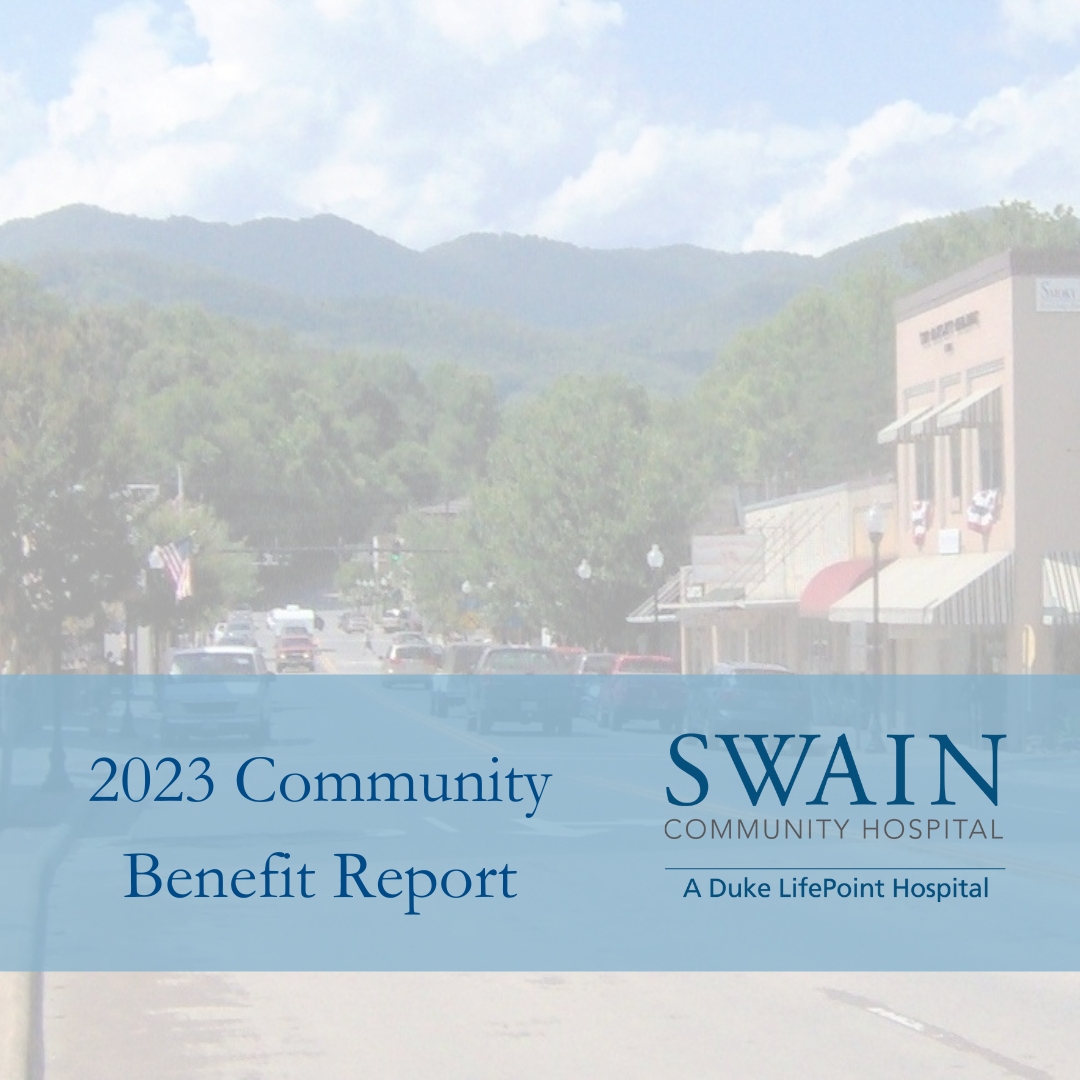
Harris Regional Hospital and Swain Community Hospital publish 2023 Community Benefit Report
April 05, 2024Community Benefit Report outlines hospital’s continued impact on health and economic vitality of western North Carolina
Learn more -
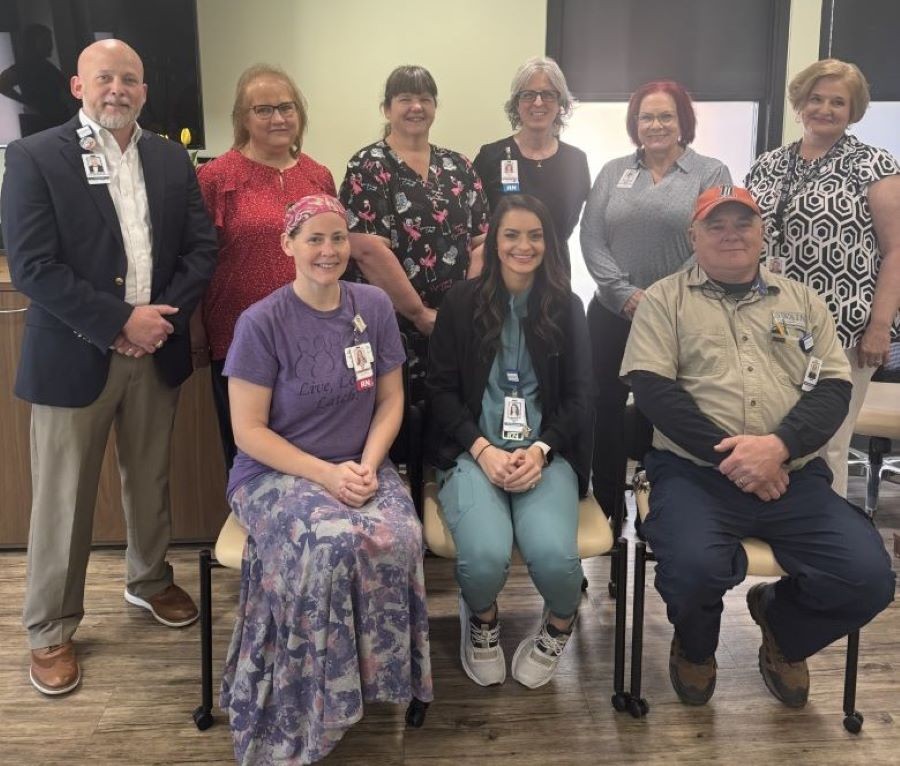
Honoring staff and provider commitment, Harris Regional and Swain Community Hospitals’ Service Awards program highlights tenure
March 25, 2024Harris Regional Hospital and Swain Community Hospital were pleased to hold another celebratory luncheon in honor of staff members who reached significant milestones in their tenure as employees of the hospitals.
Learn more -
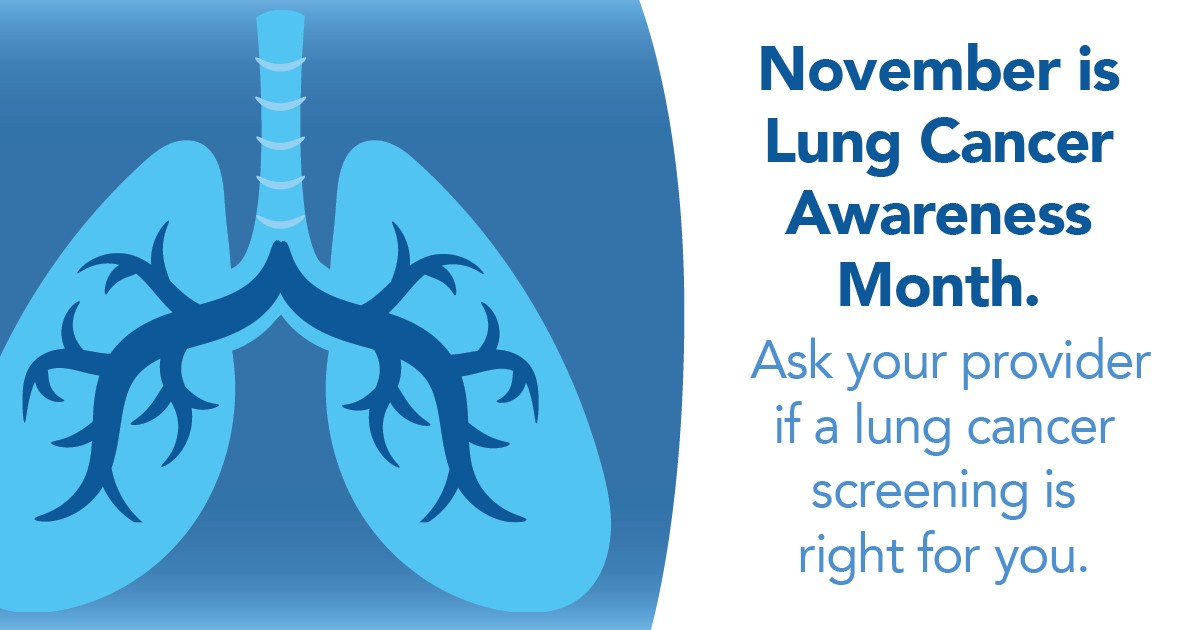
Lung Cancer Awareness: Reducing Your Risk
November 01, 2023Thanks to movies, TV shows, and extensive public awareness campaigns, lung cancer has long been a part of the public consciousness. Many Americans recognize that the disease is strongly linked to smoking, and that its symptoms include coughing, wheezing and persistent chest pain. This awareness is a good thing –...
Learn more -
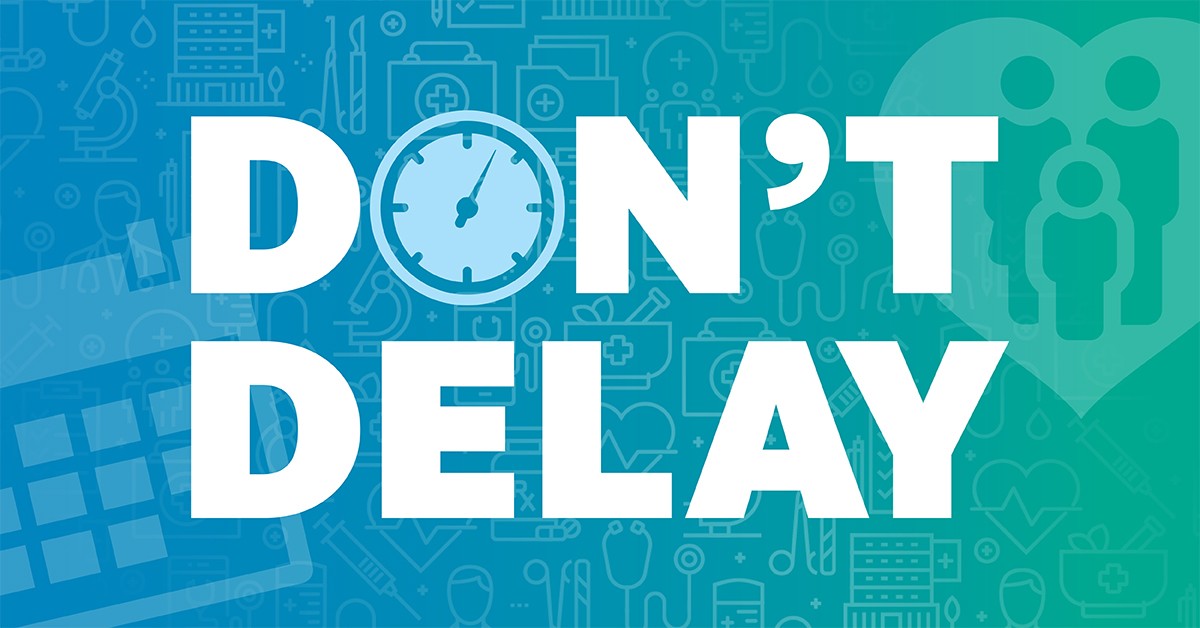
Do not Make Your Health Wait Until Next Year
November 01, 2023Preventive care is a key factor in maintaining your overall health. Annual well visits and health screenings like mammograms and colonoscopies can help you and your provider stay on top of any health issues that may arise before they become serious.
Learn more -
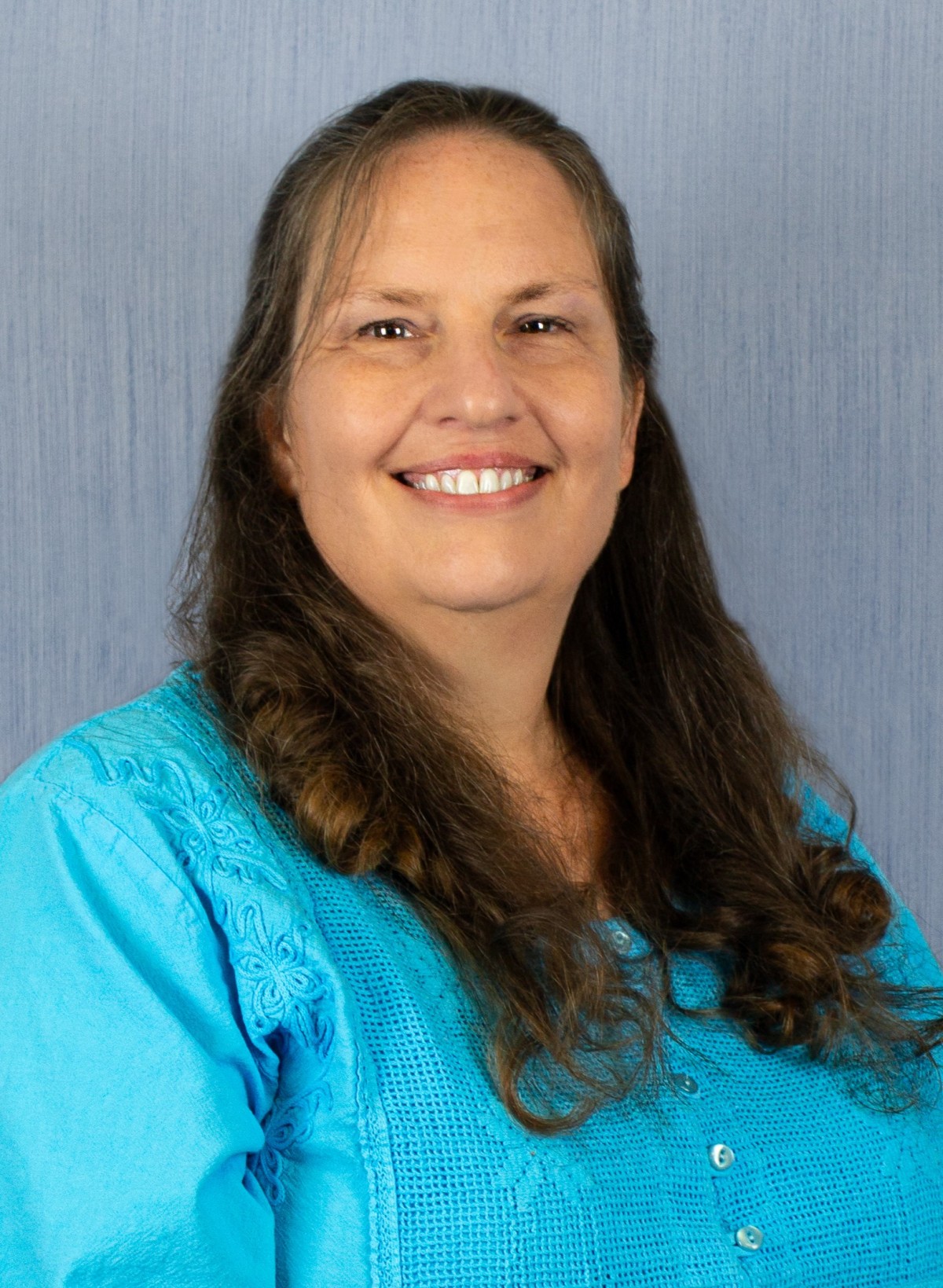
Welcoming Marlo Sharp, CNM to Harris Women's Care
November 01, 2023Sharp was born in Mineral Wells, Texas, and as part of a military family, grew up in Sierra Vista, Arizona; Stuttgart, Germany; and graduated high school in Copperas Cove, Texas. For most of her career, she has been caring for women and newborns in Labor and Delivery, neonatal intensive care...
Learn more -
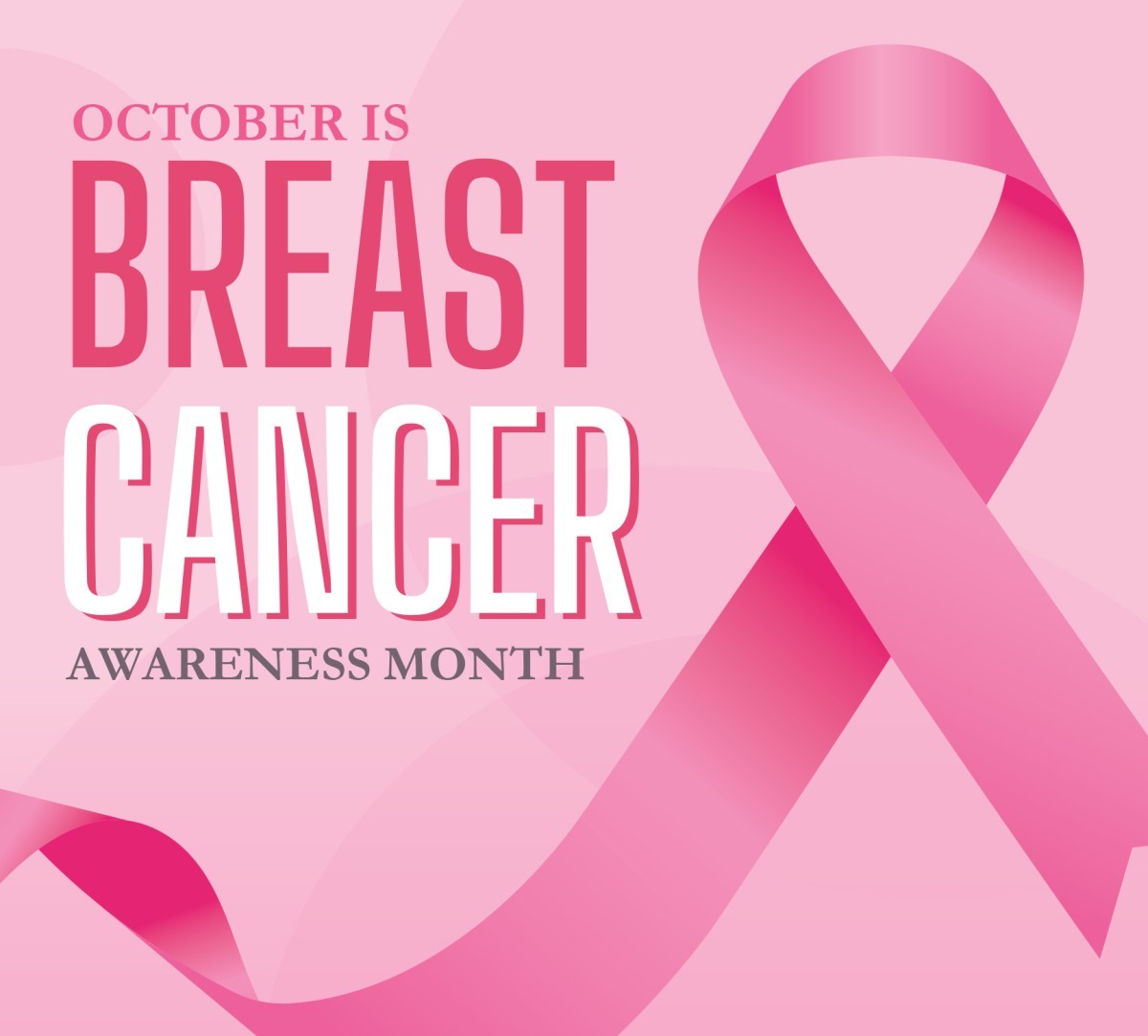
Breast Cancer—Be Aware and Take Action
October 01, 2023Breast Cancer Awareness Month is observed nationally every October to raise awareness about the impact of breast cancer, and to provide education regarding the most common symptoms and associated risk factors for the disease. By staying informed and taking preventive action to fight breast cancer, we can help to minimize the effect this disease has on women in our communities.
Learn more -
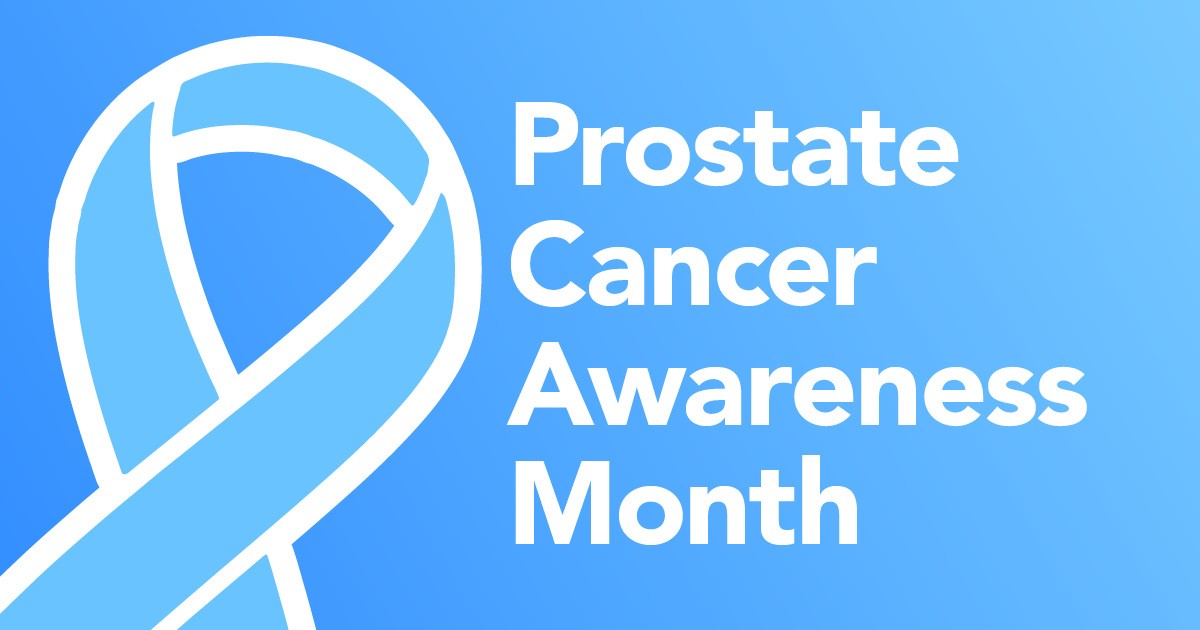
-
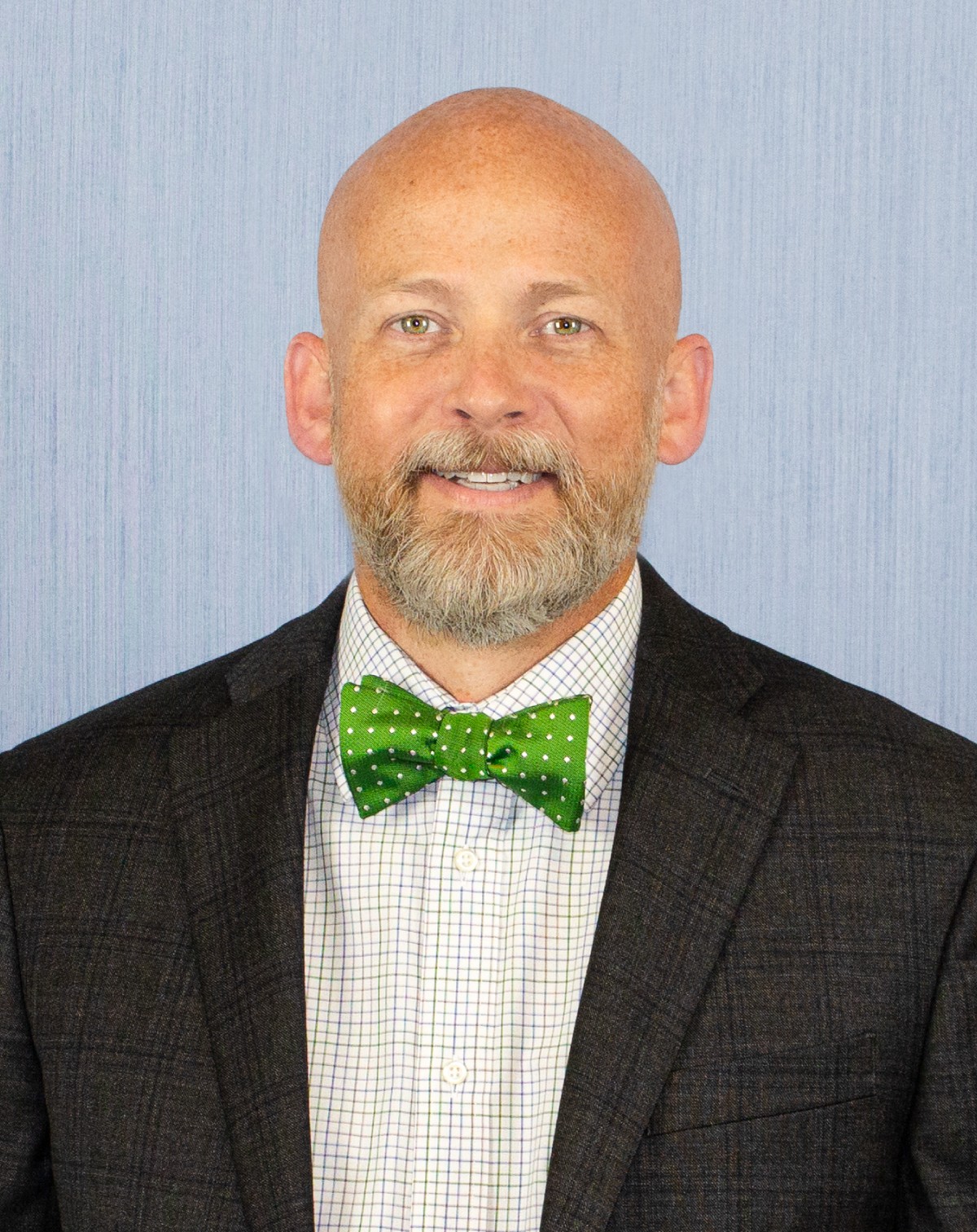
Harris Regional Hospital & Swain Community Hospital Announces New CEO: Former CFO Takes the Helm
August 09, 2023Harris Regional Hospital and Swain Community Hospital, Duke LifePoint hospitals, are pleased to announce the appointment of Ashley Hindman as the new Chief Executive Officer. Hindman has been serving as the Chief Financial Officer (CFO) of the hospital system and will now transition into the role of CEO, effective immediately.
Learn more -
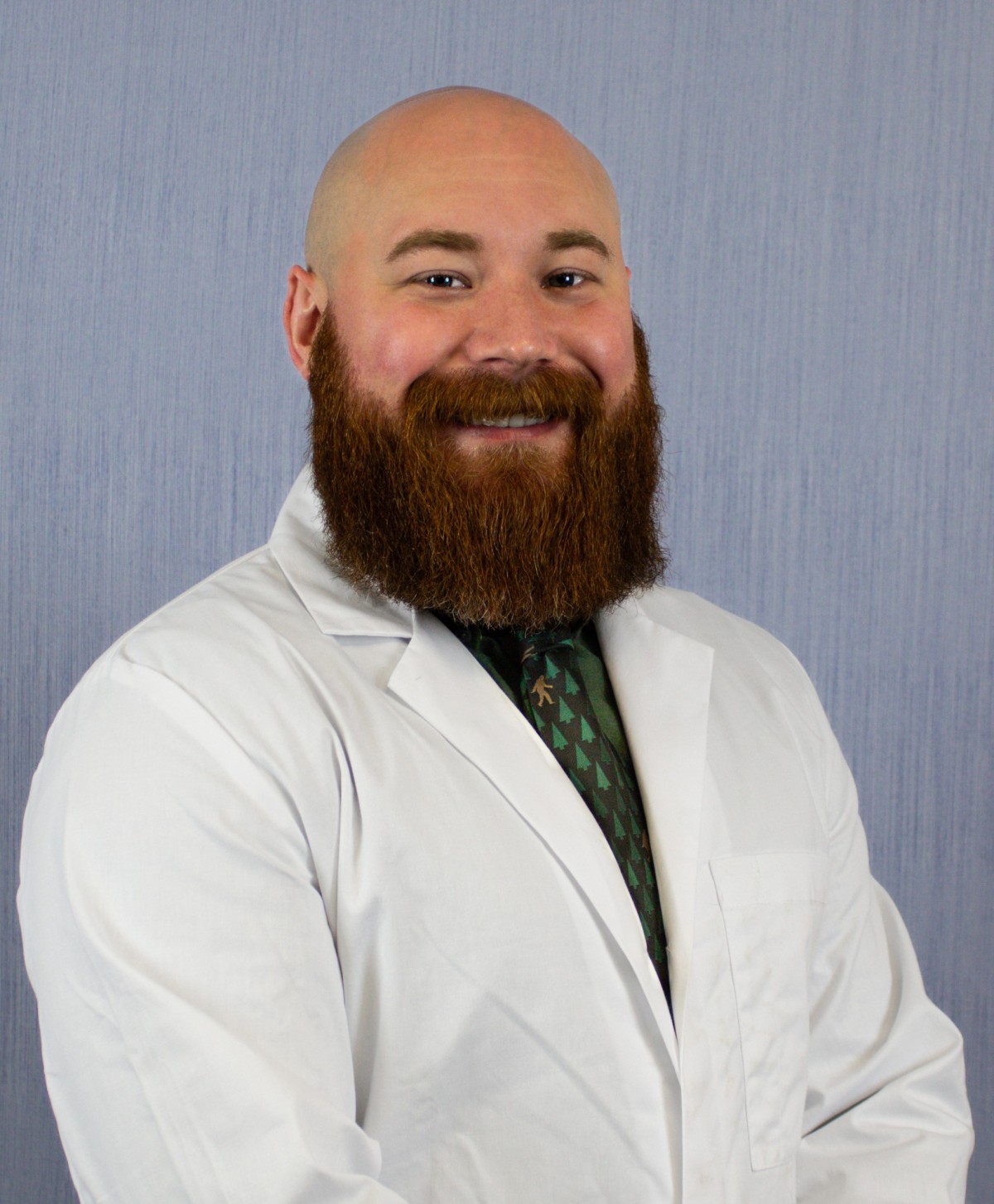
Swain Family Care Welcomes Dr. Joseph Murcko
July 28, 2023“I personally understand the challenges of being a patient,” shares Dr. Murcko, “and I hope to nurture a caring and therapeutic physician-patient relationship with each visit. I chose a career in medicine because I have a passion for helping others live the healthiest version of their lives. I believe that we can reach our greatest potential in our relationships, jobs, and interests when we have optimized the health of the body, mind and soul. I hope to work together with my patients to help them achieve their best health.”
Learn more -
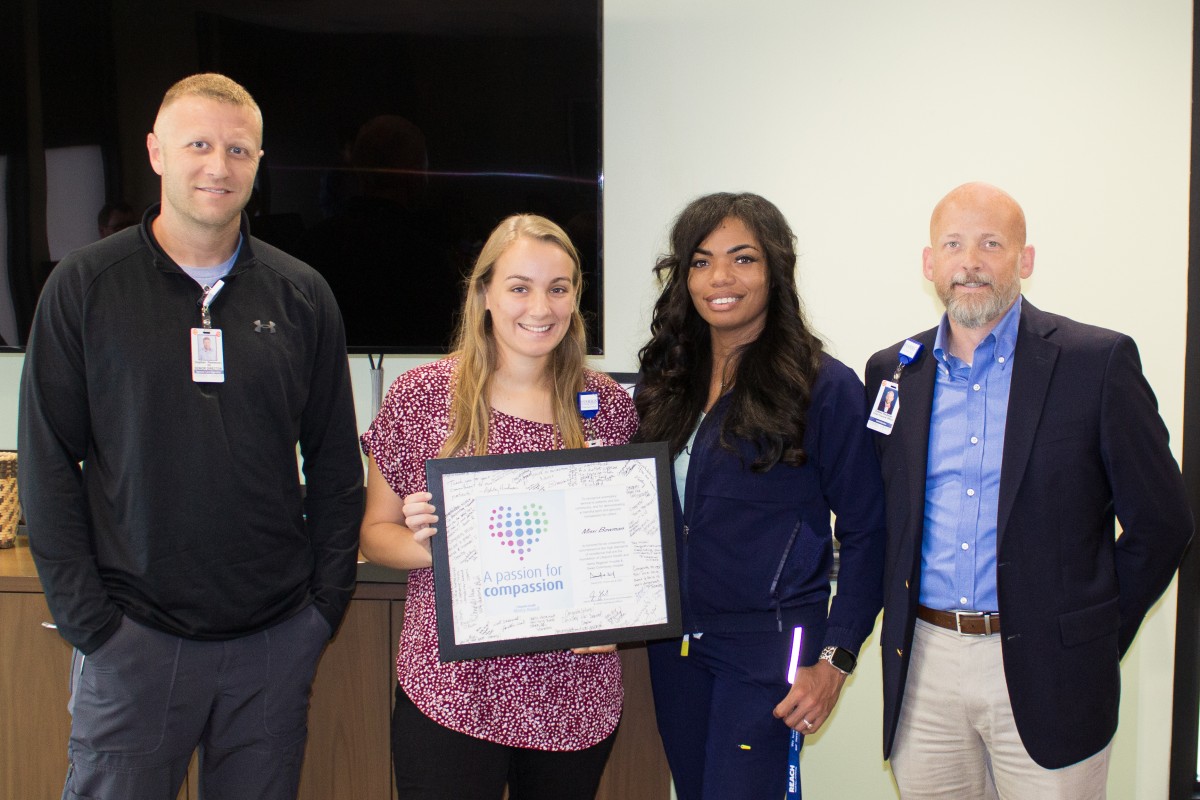
Harris Regional & Swain Community Hospital Names 2023 Mercy Award Winner
June 23, 2023Missi has been employed as a registered nurse at our hospitals since 2017. She came to us as new graduate and nursing leadership quickly determined she was an invaluable asset to our healthcare team. Missi's passion and her desire to learn and grow in the nursing field was evident. Within a year of hire she was selected as recipient of the Daisy Award after receiving a touching nomination for the compassionate care she provided for a Hospice patient and providing much needed reassurance for the family members during this very difficult time.
Learn more
